- Home
- Arthur C. Clarke
Cradle Page 3
Cradle Read online
Page 3
Carol was five or six and sitting in her room, ready for bed as requested, and her father came into the room carrying a picture book. They sat together on the bed and leaned against the wallpaper with yellow flowers while he read to her. She loved it when he put his arm around her and turned the pages in her lap. She felt protected and comfortable. He read to her a story about a whale that seemed human and a man named Captain Ahab. The pictures were frightening; one in particular showed a boat being tossed about by a giant whale with a harpoon stuck in his back.
When her father tucked her in that night he seemed to linger in the room, showering her with tender hugs and kisses. She saw tears in his eyes and asked him if anything was wrong. Her father just shook his head and told her that he loved her so much, sometimes it made him cry.
Carol was so deep in this vivid memory that she wasn’t paying attention to where she was swimming. She had drifted west with the current and could now barely see the hotel. It took her a few minutes to orient herself and head back in the right direction.
3
Lieutenant Richard Todd waited impatiently while the data processing assistant made the last corrections on the master sheets. ‘Come on, come on. The meeting is supposed to start in five minutes. And we have a couple more changes to make.’
The poor girl was clearly bothered by the Navy officer hanging over her shoulder while she worked at the design monitor. She corrected a couple of spelling errors on one sheet and pushed the return key. On the screen in front of her appeared a computer line-drawn map of south Florida and the Keys. With a light pen she tried to follow Lieutenant Todd’s instructions and highlight the specific areas described by him.
‘There,’ he said finally, ‘that’s good. That finishes the group. Now hit the hard copy repro button. What’s the initial key? I7BROKO1? Good. On the Top Secret data base? All right. Today’s password?’
‘Matisse, Lieutenant,’ she answered, standing up to walk around the machine and pick up a single collated hard copy of his presentation. Todd had a blank look on his face. ‘He was a French painter,’ the girl said sarcastically. ‘M-A-T-I-S-S-E, in case you’re wondering.’
Todd signed out for his copy of the material and then scribbled the spelling of Matisse on a sheet of scratch paper. He awkwardly thanked the girl in a minimal way and left the room, heading out of the building and across the street.
The conference centre for the US Naval Air Station in Key West was next door. It was a brand-new building of modern design, one of the few edifices on the base to break the architectural monotone that could best be described as ‘white stucco, World War II.’ Lieutenant Todd worked in one of the nondescript white buildings as head of Special Projects for the site. Todd and his group were essentially troubleshooters for the command, top-flight systems engineers who were moved from project to project depending upon where they were needed. Todd himself was twenty-eight, an Annapolis graduate in aerospace engineering, a gung-ho Navy bachelor who had grown up in Littleton, a suburb of Denver in Colorado. Todd was ambitious and in a hurry. He felt as if he were out of the mainstream down here in Key West and longed for a chance to move to somewhere where he could really prove his mettle, a weapons design centre, for example, or even the Pentagon.
The sign on the door in the conference centre read TOP SECRET—BROKEN ARROW. Lieutenant Todd checked his watch. One minute remained before 0930, the time for the meeting. He entered an alphanumeric code into the door lock and walked into the back of a medium-sized conference room with three large screens in the front. His group of five younger officers and a couple of members of the senior staff had already arrived. They were standing around the coffee and doughnuts that were on a table at the left. Commander Vernon Winters was sitting alone at the centre of a long table that ran across the room and virtually bisected it. He was facing the screens with his back to the entrance.
‘All right, all right,’ Winters said, first looking around the room and then at the digital time printout in the upper left corner of the front wall. ‘Let’s get started. Are you ready, Lieutenant Todd?’ The other officers sat down at the table. At the last minute another senior staff officer entered the room and took a seat in one of the chairs at the back.
Todd walked around the table to the front of the room, to a podium with a built-in keyboard underneath a small monitor, and eyed Commander Winters. ‘Yes, sir,’ he answered. He activated the computer system in the podium. Todd indicated that he wanted access to the Top Secret Data Base. He then entered a complicated keyed input that was the first part of a password system. The interactive monitor in the podium next requested the password of the day. Todd’s first attempt was unsuccessful, for he hadn’t remembered the correct spelling. He began to search his pockets for the piece of scrap paper.
The only other keyboard in the room was in the centre of the long table where Winters was sitting. While Lieutenant Todd fumbled around at the podium, the commander smiled, entered the password, and then added some code of his own. The centre screen came alive in vivid colour and showed a stylized woman in a yellow dress, sitting at a piano, while two young boys played draughts behind her. A sense of red flooded forth from the picture. It was a reproduction of one of Matisse’s paintings from his late years in Nice and was magnificently projected at the front of the room. Lieutenant Todd looked startled. A couple of the senior officers laughed.
Winters smiled engagingly. ‘There are some fairly amazing things that can be done with the resolution power of a 4K-by-4K image and a nearly infinite data base.’ There was an awkward silence and then Winters continued. ‘I guess it’s hopeless to keep trying to expand the education of you young officers on this base. Go on. Continue. I’ve put you already into the Top Secret Data Base and any new input will override the picture.’
Todd composed himself. This man Winters is certainly a queer duck, he thought. The admiral who was the commanding officer of the Key West base had assigned the commander last night to lead this important Panther missile investigation. Winters had an impressive background in missiles and in systems engineering, but whoever heard of starting such a critical meeting by calling a painting up on the screen? Todd now entered 17BROKO1 and, after counting the people, the number nine. In a few seconds a machine in the back corner of the room had copies of the presentation collated and stapled for the use of the participants. Todd called his first image (entitled ‘Introduction and Background’) to the centre screen with another touch of the keyboard.
‘Yesterday morning,’ he began, ‘a demonstration test for the new Panther missile was conducted over the North Atlantic. The missile was fired at 0700 from an airplane at eighty thousand feet off the coast of Labrador. It was aimed at a target near the Bahamas, one of our old aircraft carriers. After flying a normal ballistic trajectory into the region where the ship was located, the Panther was supposed to activate its terminal guidance, which uses the Advanced Pattern Recognition System or APRS. The missile should then have found the aircraft carrier and, using the reaction control jets as its primary control authority, made whatever vernier corrections were necessary to impact the old carrier on the main deck.’
Todd pushed a key on the podium and a line-drawn map of the American east coast, including the area from Labrador through to Cuba, appeared on the left screen. ‘The missile was a final test version,’ he continued, ‘in the exact configuration of the production flight vehicle, except for the command test set and the warhead. This was to be the longest test flight yet conducted and was designed to demonstrate thoroughly the new 4. 2 version of the software that was recently installed in the APRS. So of course the missile was not armed.’
The lieutenant picked up a light pen from the podium and drew on the small monitor in front of him. His markings were immediately translated to the larger screen behind him so that everyone could easily follow his discussion. ‘On the screen you all can see the predicted versus actual overflight path of the bird yesterday. Here, roughly ten miles east of Cape Canaveral on what appeared to be a nominal flight, the sequencer turned on the cameras. After a couple of hundred calibration images, sort of a self-test of the APRS, the terminal guidance algorithms were activated as scheduled. As far as we can tell from the realtime telemetry, nothing strange had occurred until this time.’
The right screen now showed a detailed map of south Florida and the Keys that included the target in the Bahamas. The maps on the two flanking screens remained in view during the rest of his presentation but Lieutenant Todd constantly changed the word charts in the middle to keep up with the discussion. ‘The a priori location of the target, which was where the cameras should first have looked for the aircraft carrier, was here at Eleuthera, in the Bahamas. The search algorithm should have fanned out in a circle from there and, if it had operated properly, found the target in about fifteen seconds. This’ (Todd pointed toward a dotted line on the more detailed map) ‘should have been the impact trajectory.
‘However,’ Todd continued dramatically, ‘based on the telemetry data that we have analysed to date, it appears that the missile veered sharply westward, toward the coast of Florida, soon after the terminal guidance system was activated. We have only been able to reconstruct its path up to this point, where it was about three miles west of Miami Beach at an altitude of ten thousand feet. After that the telemetry becomes intermittent and erratic. But we do know that all the terminal guidance engines were on at the time we lost complete data. Projecting the total control authority for the missile, the area highlighted here, covering the Everglades, the Keys, and even as far south as Cuba, represents where the bird might have landed.’
Lieutenant Todd paused for a second and Commander Winters, who had been writing down major points in a small notebook during the presentation, immediately jumped in
and started taking charge of the meeting. ‘A couple of questions, Lieutenant, before we proceed,’ Winters began in a businesslike manner with an obvious overtone of authority. ‘First, why was the missile not destroyed soon after it veered off course?’
‘We’re not exactly certain, Commander. The command test set and the small ordnance had been installed, of course, specifically for that purpose. The change in the motion of the vehicle was so sudden and so unexpected that we reacted a little slowly at the beginning. By the time we sent the command, it’s possible that we were out of range. All we know is that we never saw an explosion of any kind. We can only assume—’
‘We’ll come back to this operational error later,’ Winters interrupted him again. Todd blanched at the word ‘error’ and fidgeted behind the podium. ‘Where would the impact point have been according to the guidance constants active at the time of the last complete telemetry packet? And how long is it going to take us to extract additional information from the intermittent data?’
Lieutenant Todd noted to himself that the commander was sharp. Winters had obviously been associated with anomaly investigations before. Todd then explained that if the active guidance constants had not changed again, the continued firing of the terminal engines would have brought the missile to an impact point about twenty miles south of Key West. ‘However,’ Todd added, ‘the constants were allowed, by the software, to change every five seconds. And they had changed in two of the last five internal data updates. So it’s unlikely they stayed the same as they were when our complete telemetry terminated. Unfortunately, although all the constants—even the future predicted ones that are being calculated by the APRS—are stored in the onboard computer, because of bandwidth limitations we only transmit the active constants with the realtime telemetry. We are now going through the dropout data manually to see if we can find out anything more about the constants.’
One of the other staff officers asked a question about the probability of the missile actually having reached Cuba. Lieutenant Todd answered ‘very low’ and then activated an electronic overlay that placed a dotted and blinking trajectory on the right screen inset map. The blinking dots followed a path that started just off Coral Gables, south of the city of Miami, and then continued across a portion of south Florida, into the Gulf of Mexico, across the Keys, and finally into the ocean again. ‘It is along this line that we intend to concentrate our search. Unless the bird suddenly changed its mind, its general heading would have been consistent with a perceived target located anywhere along this path. And since we have no reports of any land impact near a populated area, we assume that the missile landed in the Everglades or the ocean.’
Lieutenant Todd had consulted briefly with Winters the previous evening on the agenda for the meeting. It had been scheduled to last only an hour, but the number of questions caused it to stretch to an hour and a half. Todd was thorough and precise in his presentation but was obviously dismayed by Winters’s continued probing into the possibility of human error. The lieutenant freely admitted that they had blown the procedure to destroy the missile when it went awry, but defended his men by citing the unusual circumstances and the nearly perfect previous record enjoyed by the Panther missile. He also explained that they were going to equip their search vessels with the best possible instrumentation (‘including the new ocean telescope developed by the Miami Oceanographic Institute’) and begin searching the outlined areas in earnest the next day.
Winters asked many questions about the possible cause of the missile’s strange behaviour. Todd told him that he and his staff were convinced that it was a software problem, that some new or updated algorithm in the 4.2 version of the software had somehow scrambled both the initialization sequence and the optically stored target parameters. Winters accepted their opinion eventually, but not until he had ordered them to prepare a ‘top down’ failure modes analysis that would list every possible hardware, software, or operational error (Todd winced when Winters mentioned operations again) that could lead to the kind of problem observed.
Toward the end of the meeting Winters reiterated the secrecy of the activity and pointed out that the Broken Arrow project was to remain completely unknown to the press. ‘Commander,’ Todd broke in while Winters was explaining the press policy. The lieutenant had begun the meeting with confidence but was feeling increasingly unsettled. ‘Sir, I had a call late yesterday afternoon from a reporter, a Carolyn or Kathy Dawson I think, from the Miami Herald. She told me that she had heard of some special activity down here and that I was supposedly connected with it. She claimed her source was someone in the Pentagon.’
Winters shook his head. ‘Shit, Lieutenant, why didn’t you say something before this? Can’t you imagine what will happen if the word gets out that one of our missiles wandered over Miami?’ He paused. ‘What did you tell her?’
‘I didn’t tell her anything. But I think she’s still suspicious. She called the public affairs office after she talked to me.’
Winters gave an order that the existence of the Broken Arrow investigation was to be kept classified and that any and all inquiries about it were to be referred to him. He then called for the next status meeting at 1500 on the following day, Friday, by which time (he told Lieutenant Todd) the commander expected to see the results of the analysis of the intermittent telemetry, a more complete logic breakdown of the failure modes, and a list of recent open items with the 4.2 software.
Lieutenant Richard Todd left the meeting aware that this assignment was going to have a significant impact on his career. It was clear to the lieutenant that his personal competence was already being questioned by this Commander Winters. Todd intended to respond to the challenge in a positive way. First he called a small postmortem meeting of the junior officers in his group. He told them (they were all young ensigns, just out of the university after completing a Navy ROTC program) that their collective ass was on the line. Then he defined a series of action items that would keep all of them up working for most of the night. It was imperative to Todd that he be properly prepared for the next meeting.
4
Key West was proud of its new marina. Completed in 1992 just after the explosion in cruises had brought an influx of new visitors to the old city, the marina was thoroughly modern. Scattered around the jetties on high towers were automatic cameras which constantly surveyed the marina. These cameras and the rest of the electronic surveillance systems were just one facet of an elaborate security setup which protected the slips when the boat owners were absent. Another of the new features of the Hemingway Marina (it was naturally named after the most famous resident of Key West) was a centralized navigation control centre. Here, using a virtually automatic traffic control system, a single controller was able to pass instructions to all the vessels in the harbour and provide for efficient handling of the burgeoning water traffic.
The marina was built on Key West Bight, on what had been a decaying part of the waterfront. It had slips for almost four hundred boats and its completion changed the nature of the city’s commerce. Young professionals wanting to be near their boats at the marina quickly purchased and upgraded all the nineteenth-century houses that lined Caroline and Eaton Streets on what was known as the Pelican Path. Smart shops, restaurants, even little theatres crowded into the area around the marina to create an atmosphere of bustle and excitement. There was even a new Japanese hotel, the Miyako Gardens, which was famous for its magnificent collection of tropical birds that played in the waterfalls and ferns of its atrium.
Just before noon Carol Dawson walked into the marina headquarters and approached the circular information desk in the middle of the large room. She was wearing a sharp silk blouse, light purple in colour, and a pair of long white cotton slacks that covered the tops of her white tennis shoes. Two petite ruby and gold bracelets were wrapped around her right wrist and a huge amethyst set in a gold basket at the end of a neck chain dangled perfectly at the vertex of the ‘V’ in her open blouse. She looked stunning, like a prosperous tourist about to rent a boat for the afternoon.

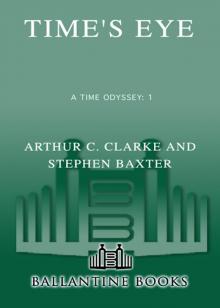 Time's Eye
Time's Eye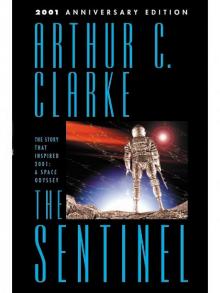 The Sentinel
The Sentinel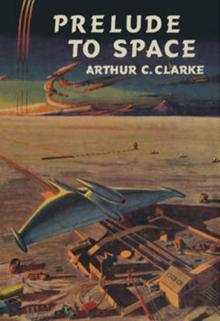 Prelude to Space
Prelude to Space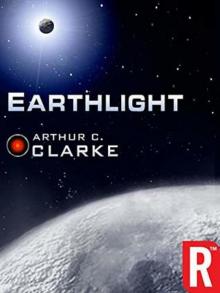 Earthlight (Arthur C. Clarke Collection)
Earthlight (Arthur C. Clarke Collection)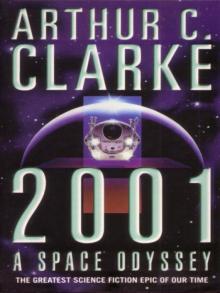 2001: A Space Odyssey
2001: A Space Odyssey Against the Fall of Night
Against the Fall of Night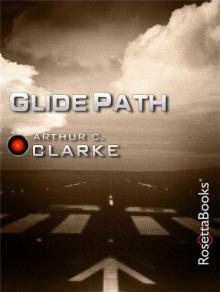 Glide Path
Glide Path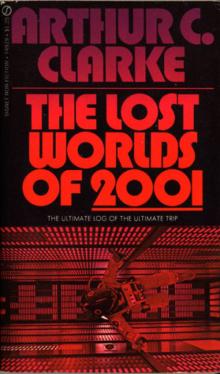 The Lost Worlds of 2001
The Lost Worlds of 2001 The Trigger
The Trigger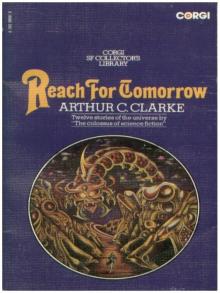 Reach for Tomorrow
Reach for Tomorrow Islands in the Sky
Islands in the Sky The Songs of Distant Earth
The Songs of Distant Earth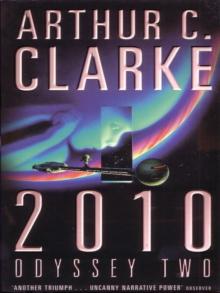 2010: Odyssey Two
2010: Odyssey Two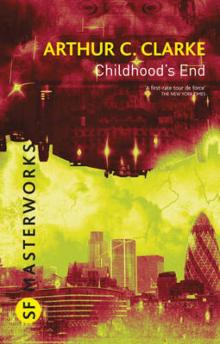 Childhood's End
Childhood's End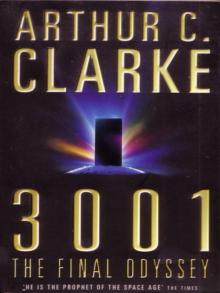 3001: The Final Odyssey
3001: The Final Odyssey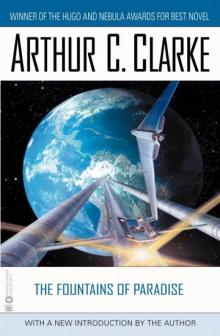 The Fountains of Paradise
The Fountains of Paradise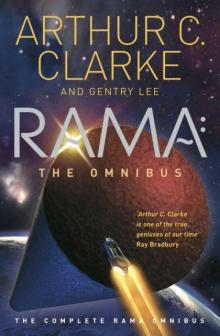 Rama: The Omnibus
Rama: The Omnibus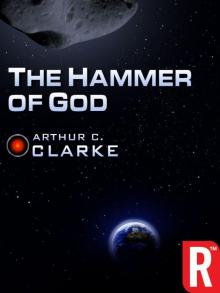 The Hammer of God
The Hammer of God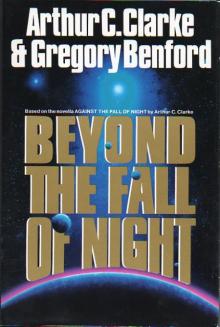 Beyond the Fall of Night
Beyond the Fall of Night Tales From Planet Earth
Tales From Planet Earth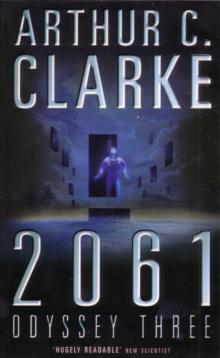 2061: Odyssey Three
2061: Odyssey Three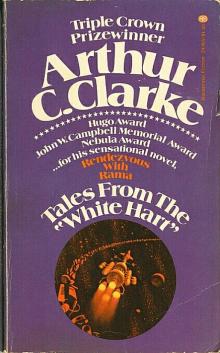 Tales From the White Hart
Tales From the White Hart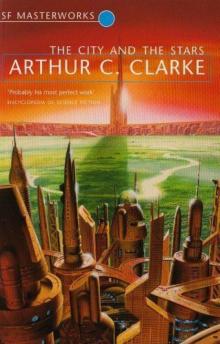 The City and the Stars/The Sands of Mars
The City and the Stars/The Sands of Mars The Star
The Star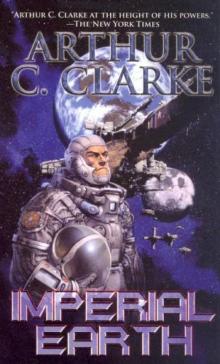 Imperial Earth
Imperial Earth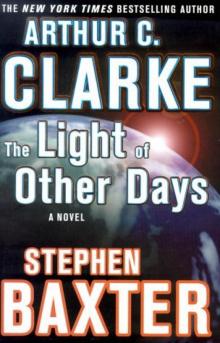 The Light of Other Days
The Light of Other Days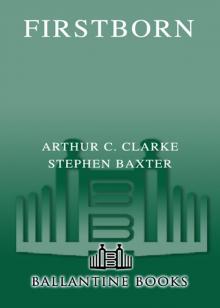 Firstborn
Firstborn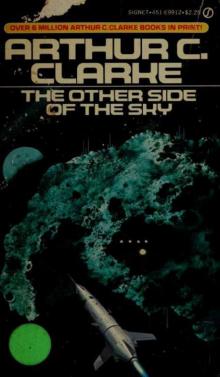 The Other Side of the Sky
The Other Side of the Sky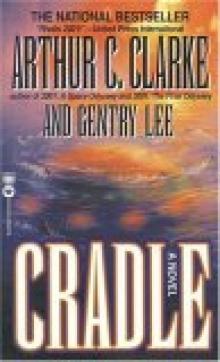 Cradle
Cradle The Wind From the Sun
The Wind From the Sun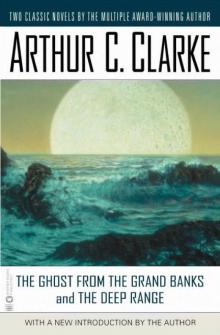 The Ghost From the Grand Banks and the Deep Range
The Ghost From the Grand Banks and the Deep Range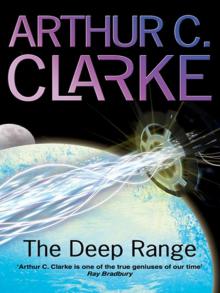 The Deep Range
The Deep Range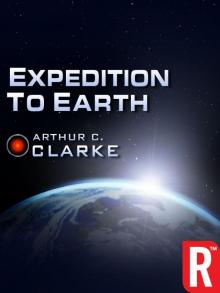 Expedition to Earth
Expedition to Earth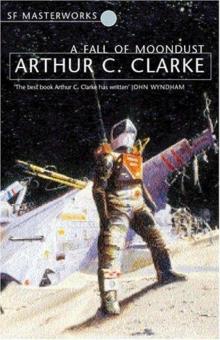 A Fall of Moondust
A Fall of Moondust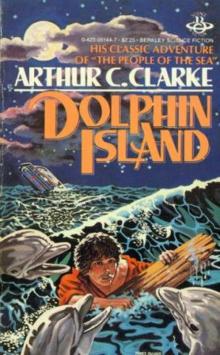 Dolphin Island (Arthur C. Clarke Collection)
Dolphin Island (Arthur C. Clarke Collection) Richter 10
Richter 10 The City and the Stars
The City and the Stars Tales of Ten Worlds
Tales of Ten Worlds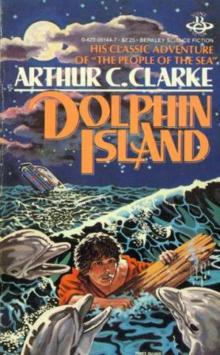 Dolphin Island
Dolphin Island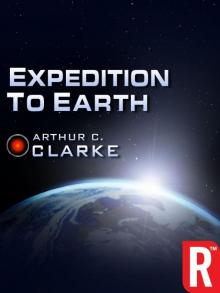 Expedition to Earth (Arthur C. Clarke Collection: Short Stories)
Expedition to Earth (Arthur C. Clarke Collection: Short Stories)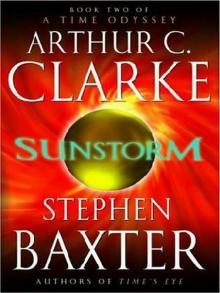 Sunstorm
Sunstorm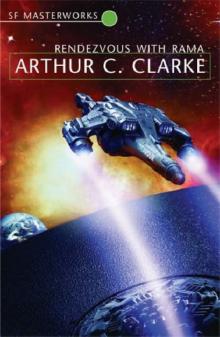 Rendezvous with Rama
Rendezvous with Rama The Collected Stories of Arthur C. Clarke
The Collected Stories of Arthur C. Clarke Trouble with the Natives
Trouble with the Natives Rama Revealed r-4
Rama Revealed r-4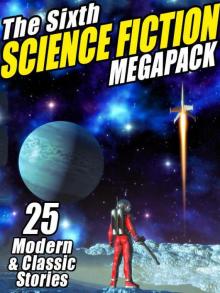 The Sixth Science Fiction Megapack
The Sixth Science Fiction Megapack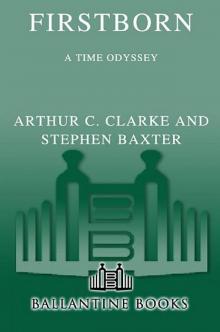 Firstborn to-3
Firstborn to-3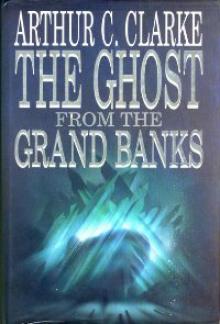 The Ghost from the Grand Banks
The Ghost from the Grand Banks Into the Comet
Into the Comet The Fires Within
The Fires Within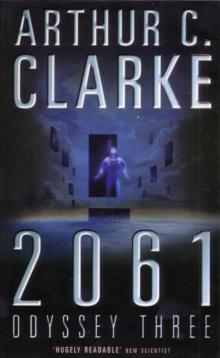 2061: Odyssey 3
2061: Odyssey 3 The Ninth Science Fiction Megapack
The Ninth Science Fiction Megapack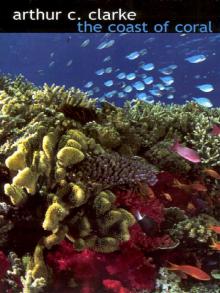 The Coast of Coral
The Coast of Coral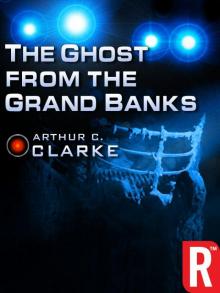 The Ghost from the Grand Banks (Arthur C. Clarke Collection)
The Ghost from the Grand Banks (Arthur C. Clarke Collection) The Space Trilogy
The Space Trilogy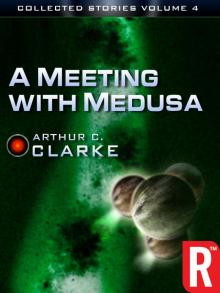 A Meeting With Medusa
A Meeting With Medusa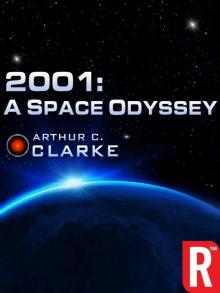 2001: A Space Odyssey (Arthur C. Clarke Collection: The Odyssey)
2001: A Space Odyssey (Arthur C. Clarke Collection: The Odyssey) Islands in the Sky (Arthur C. Clarke Collection)
Islands in the Sky (Arthur C. Clarke Collection)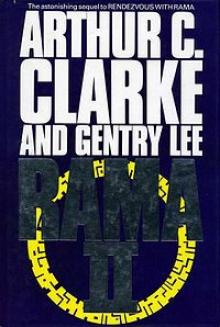 Rama II r-2
Rama II r-2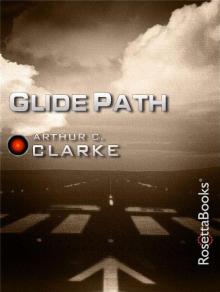 Glide Path (Arthur C. Clarke Collection)
Glide Path (Arthur C. Clarke Collection)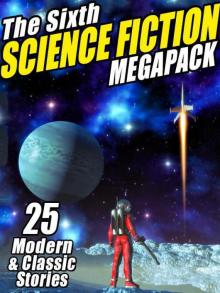 The Sixth Science Fiction Megapack: 25 Classic and Modern Science Fiction Stories
The Sixth Science Fiction Megapack: 25 Classic and Modern Science Fiction Stories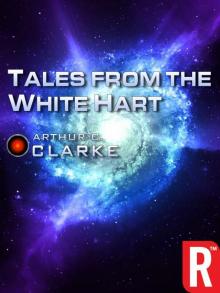 Tales from the White Hart (Arthur C. Clarke Collection: Short Stories)
Tales from the White Hart (Arthur C. Clarke Collection: Short Stories) The Reluctant Orchid
The Reluctant Orchid